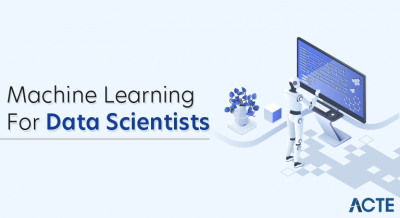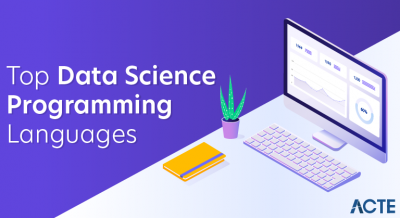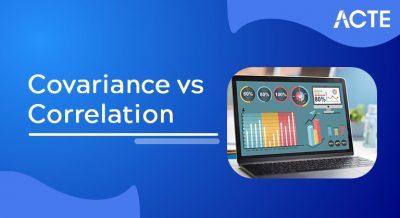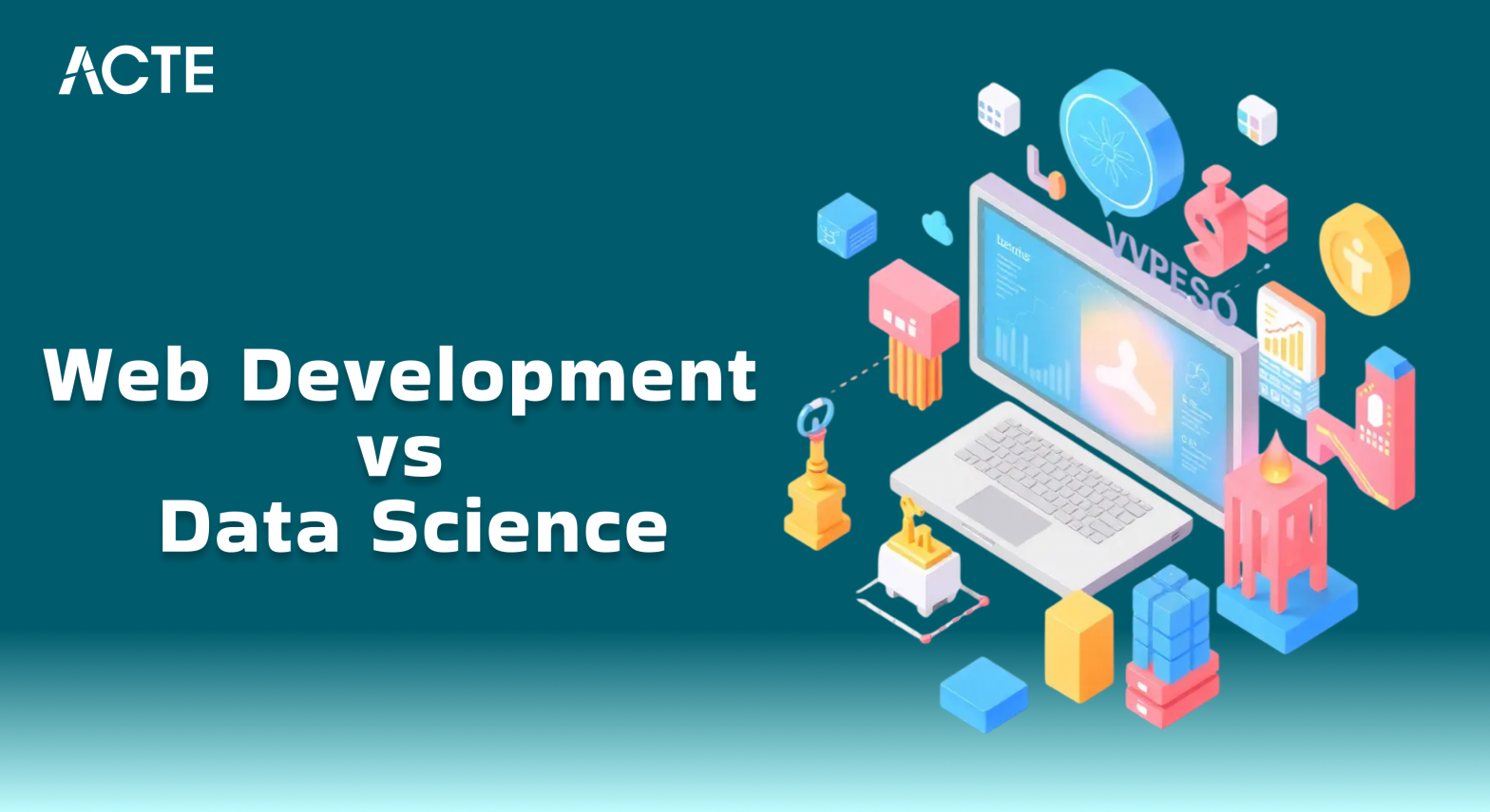
- Introduction to Data Science and Web Development
- Key Differences Between Data Science and Web Development
- Required Skills and Technologies
- Programming Languages: Python vs. JavaScript
- Data Science Tools vs. Web Development Frameworks
- Project Workflows and Development Approaches
- Career Opportunities and Job Roles
- Salary Comparison: Data Science vs. Web Development
Introduction to Data Science and Web Development
In today’s digital age, Data Science and Web Development are two of the most prominent and rapidly growing fields, each playing a vital role in technology and innovation. Although both involve working with computers and programming, their focuses and skill sets differ significantly. Data Science centers on analyzing and interpreting vast amounts of complex data to support decision-making and uncover actionable insights. It combines statistical methods, programming skills (often in languages like Python or R), and domain expertise to extract meaningful patterns from both structured and unstructured data sources. On the other hand, Web Development, unlike Data Science Training, is concerned with designing, building, and maintaining websites and web applications. It focuses on creating an engaging user experience, ensuring website functionality, and optimizing performance and visual design. Web developers typically work with technologies such as HTML, CSS, JavaScript, and various frameworks to bring digital interfaces to life. As digital transformation accelerates across industries, professionals from diverse backgrounds are exploring opportunities in these fields. Understanding the key differences, required skills, tools, and workflows is essential for anyone considering a career in Data Science or Web Development. This guide provides an in-depth look into both areas, helping individuals make informed decisions and build successful careers in these dynamic and evolving domains.
Are You Interested in Learning More About Data Science? Sign Up For Our Data Science Course Training Today!
Key Differences Between Data Science and Web Development
Data Science and Web Development are two distinct fields within the tech industry, each with its own focus, skill sets, and goals. The primary difference lies in their core objectives: Data Science is centered on extracting meaningful insights from data, while Web Development focuses on creating functional and user-friendly websites or applications. The Role of Citizen Data Scientists in Today’s Business involves collecting, cleaning, analyzing, and interpreting large datasets using statistical methods, machine learning, and programming languages such as Python or R. The goal is to uncover hidden patterns, predict trends, and support decision-making across various industries. Data scientists need a strong background in mathematics, statistics, and data visualization, alongside domain knowledge relevant to their field. In contrast, Web Development is about designing and building websites or web applications that are visually appealing, responsive, and easy to navigate.
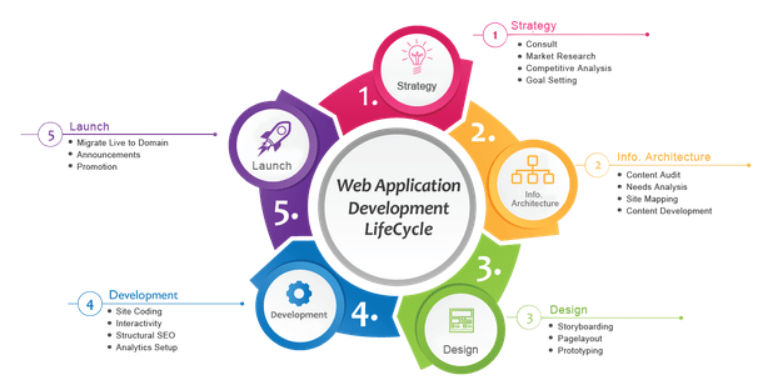
Web developers work extensively with front-end technologies like HTML, CSS, and JavaScript, as well as back-end frameworks and databases. Their focus is on performance, user experience, and functionality, ensuring that digital platforms are accessible and efficient. While both fields require programming skills, Data Science leans more toward analytical and statistical expertise, whereas Web Development emphasizes design, user interaction, and software engineering. Understanding these differences can help individuals choose the right path aligned with their interests and career goals.
Required Skills and Technologies
- Programming Languages: Data Science relies heavily on Python and R for data analysis and machine learning. Web Development requires proficiency in HTML, CSS, and JavaScript, along with server-side languages like Python (Flask/Django), PHP, or Node.js.
- Data Handling and Databases: Data Scientists should know SQL, Pandas, and NumPy for handling structured and unstructured data. Web Developers need knowledge of SQL databases and NoSQL databases.
- Statistical and Analytical Thinking: In Data Science, tools like the What is Normality Test in Minitab help draw accurate insights, while Web Developers focus on problem-solving and application architecture.
- Tools and Frameworks: Data Scientists use tools like Jupyter Notebooks, Scikit-learn, and TensorFlow. Web Developers use React, Vue.js, Bootstrap, and back-end frameworks like Express or Laravel.
- Version Control: Both fields require familiarity with Git and platforms like GitHub for collaboration and code management.
- Testing and Debugging: Data Scientists validate models with metrics like accuracy or RMSE. Web Developers use unit testing, browser debugging, and performance tools.
- Soft Skills: Both roles demand communication, teamwork, problem-solving, and a continuous learning mindset to stay current with evolving technologies.
- Primary Use: Python is primarily used in data science, machine learning, automation, and backend development. JavaScript is the backbone of web development, mainly for creating interactive front-end experiences.
- Syntax and Learning Curve: Python has a clean, readable syntax, making it ideal for beginners and those working in analytical fields. JavaScript is also beginner-friendly but has more quirks due to its browser-based nature and dynamic behavior.
- Ecosystem and Libraries: Python, emphasized in Data Science Training, boasts powerful libraries like Pandas, NumPy, Scikit-learn, and TensorFlow for data science tasks. JavaScript offers rich frameworks such as React, Angular, and Vue for building dynamic web applications.
- Execution Environment: Python runs on servers and local machines. JavaScript runs primarily in browsers but can also be used on servers via Node.js.
- Speed and Performance: JavaScript tends to be faster for web applications due to its asynchronous nature, while Python is sufficient for data processing tasks, though not ideal for performance-heavy apps.
- Community Support: Both languages have strong communities, with abundant resources, tutorials, and tools for learners and professionals.
- Career Paths: Python opens doors to careers in data science, AI, and automation. JavaScript leads to roles in front-end, full-stack, and web application development.
- Project Planning: In Data Science, planning focuses on defining the problem, identifying data sources, and selecting analytical methods. In Web Development, it involves gathering user requirements and planning site architecture and features.
- Data Collection vs. UI Design: Data Science projects begin with collecting and cleaning large datasets. Web Development starts with designing wireframes, user interfaces, and user experience (UX) elements.
- Exploratory Work vs. Defined Features: A Day in the Life of a Data Scientist involves an iterative, research-driven workflow including exploration, experimentation, and model tuning.
- Tools and Technologies: Data scientists use tools like Jupyter Notebook, Python, and SQL, while web developers rely on IDEs, HTML/CSS, JavaScript, and frameworks like React or Django.
- Model Building vs. Application Development: In Data Science, core tasks include model development, validation, and optimization. In Web Development, it’s coding the front-end/back-end and integrating databases.
- Testing Methods: Data Science emphasizes statistical validation and accuracy metrics; Web Development uses functional, usability, and performance testing.
- Deployment: Data Science results may be deployed as APIs or dashboards, while Web Development deploys fully functional websites or web apps on servers or cloud platforms.
To Explore Data Science in Depth, Check Out Our Comprehensive Data Science Course Training To Gain Insights From Our Experts!
Programming Languages: Python vs. JavaScript

Data Science Tools vs. Web Development Frameworks
Data Science and Web Development rely on different sets of tools and frameworks tailored to their specific workflows and goals. In Data Science, tools are designed to support data analysis, visualization, modeling, and machine learning. Popular programming languages include Python and R, supported by powerful libraries such as Pandas for data manipulation, NumPy for numerical computing, Matplotlib and Seaborn for data visualization, and Scikit-learn or TensorFlow for machine learning. Platforms like Jupyter Notebook and Google Colab provide interactive environments for coding, visualizing results, and documenting analyses in real-time key tools supporting the Reasons You Should Learn R, Python, & Hadoop. In contrast, Web Development frameworks focus on building, deploying, and maintaining web applications. For front-end development, technologies like HTML, CSS, and JavaScript are essential, along with frameworks such as React, Angular, or Vue.js for creating dynamic user interfaces. On the back end, developers use languages like JavaScript (Node.js), Python (Django/Flask), PHP (Laravel), or Ruby (Rails) to manage server-side logic, databases, and APIs. While Data Science tools are built for exploration and insights, Web Development frameworks emphasize user interaction, functionality, and performance. Understanding the distinct ecosystems of each field helps aspiring professionals choose the right technologies for their specific career path or project goals.
Looking to Master Data Science? Discover the Data Science Masters Course Available at ACTE Now!
Project Workflows and Development Approaches
Career Opportunities and Job Roles
Both Data Science and Web Development offer diverse and rewarding career opportunities, but they cater to different interests and skill sets. In Data Science, job roles are centered around analyzing data to solve business problems, optimize processes, and support strategic decisions. Common roles include Data Scientist, Data Analyst, Machine Learning Engineer, Data Engineer, and Business Intelligence Analyst. These positions are in high demand across industries such as finance, healthcare, e-commerce, and technology. Employers typically seek professionals with strong analytical skills, proficiency in Top Data Science Programming Languages like Python or R, and a solid understanding of statistics and machine learning. In contrast, Web Development careers focus on building and maintaining websites and web applications. Roles include Front-End Developer, Back-End Developer, Full-Stack Developer, UI/UX Designer, and Web Architect. These professionals work on everything from visual design and user interaction to server-side logic and database integration. Key skills include HTML, CSS, JavaScript, and experience with frameworks like React, Angular, or Django. Both fields offer remote work flexibility, competitive salaries, and clear growth paths. While Data Science tends to involve more analytical and research-oriented tasks, Web Development is geared toward building interactive, functional, and visually engaging digital experiences. Choosing between the two depends on your interests in data vs. development.
Are You Preparing for Data Science Jobs? Check Out ACTE’s Data Science Interview Questions & Answer to Boost Your Preparation!
Salary Comparison: Data Science vs. Web Development
When it comes to salary, both Data Science and Web Development offer competitive compensation, but several factors influence earnings, such as experience, location, industry, and specialization. Generally, Data Science roles tend to offer higher average salaries due to the specialized skill set and the increasing demand for data-driven decision-making across industries. Entry-level data scientists can expect salaries ranging from $70,000 to $90,000 annually in many regions, while experienced professionals and specialists in machine learning or artificial intelligence may earn $120,000 to $160,000+ or more, especially in tech hubs. In comparison, Web Development salaries vary depending on whether the role is front-end, back-end, or full-stack, while Data Science Training can lead to different salary prospects. Entry-level web developers typically earn between $50,000 and $75,000, while mid-level to senior developers can command salaries of $80,000 to $120,000, particularly if they work with in-demand frameworks or in major tech cities. Full-stack developers and those with UX/UI skills may see even higher earnings. While Data Science often leads in salary due to its analytical complexity and impact on strategic business outcomes, Web Development offers strong earning potential, especially for those with experience in scalable web applications and modern frameworks. Both fields offer room for growth and financial advancement.


